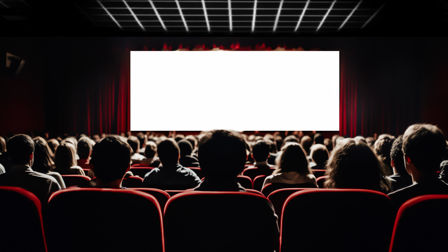South Africa Special: Overview
Despite economic and cultural crises, there are strong signs that creative change is coming to South Africa.
It’s over 20 years since South Africa was dubbed the Rainbow Nation, yet the country’s still struggling to find its identity and the slow progress of racial and cultural transformation is reflected in a too-white ad industry. This, plus fiscal woes causing safe work, has hindered creativity. Yet glimmers of bolder, more diverse campaigns have been bringing brighter hues to the scene
Epic thunderstorms and heavy downpours traditionally mark the beginning of autumn in South Africa, but when shots visits in late November, the rains still haven’t arrived. The country is in the grip of a devastating drought, and crops are shrivelling in the fields. In Johannesburg, there are emergency water restrictions, adding to the misery of load-shedding – scheduled power outages designed to prevent a city-wide blackout. Arriving in the busy suburb of Sandton during rush-hour, all the traffic lights (‘robots’), are down, turning the streets into a horn-honking free-for-all. It takes an hour to crawl a single block.
Our sluggish progress through town is an apt – if obvious – metaphor for the slow pace of change in other areas, namely South Africa’s economic growth and cultural transformation. The recent #FeesMustFall protests, where thousands marched against proposed tuition fee hikes, billed as discriminatory to poorer black students, is a stark reminder that more than 20 years since the birth of the Rainbow Nation the country is still struggling to define itself. “It’s a tough time for the country: there have been promises that haven’t necessarily been delivered on, and that makes for a palpable tension,” says Jonathan Deeb, ECD at FCB Johannesburg. And it seems there’s a similar identity crisis occurring in the advertising world. South Africa has always punched above its weight creatively, but in recent years there have been fewer knockout blows, particularly on the global awards stage. In stark contrast to the blossoming fields of music, art, fashion and film, “advertising has become sanitised – we’re in dire need of some craziness,” says Ahmed Tilly, founder of Black River FC.
More balls, bravery and black talent
So what’s to blame? The flagging economy, for one: while the weak rand has been a boon for production service companies, attracting a huge amount of international work to Cape Town, in the local market it is causing clients to jettison creative brand-building in favour of short-term retail solutions. “Our ideas have always been our most powerful asset,” says Pete Khoury, CCO of TBWAHuntLascaris Johannesburg, “but you can only make what you can sell.” Mariana O’Kelly, ECD at Ogilvy & Mather Johannesburg, agrees: “We’re lacking brave work, ballsy work, because there’s not the money to try because you don’t have room for failure. ROI is the centre of every single conversation with brands.”
While there’s little to be done on the financial front other than sit tight and ride out the storm, the other major challenge – that of increasing cultural and racial diversity or, to use the buzzword on everyone’s lips, ‘transformation’ – is within the industry’s power to change. “Big strides have been made already; there are some very top level black creatives and agencies with significant black representation,” points out Jonathan Beggs, CCO of Saatchi & Saatchi BrandsRock. On the production side, the likes of Arcade’s Lebogang Rasethaba are leading the charge for a new wave of young black directors, and, says Melina McDonald, EP at Darling, “every South African production house is committed [to transformation]; they’ll have at least one black director and it’s not just tokenism.”
However, the general consensus is that it’s happening far too slowly: “You go to awards shows, marketing events, and looking around it’s still very much a white industry,” says Tilly. Aside from black economic empowerment (BEE) now being mandatory in law, there’s a strong business case for speedy transformation: advertising is, after all, based on communication and human insights. With consumer spending increasingly moving into black hands, “creating commercials for the country requires representation of those different cultures in creative departments,” states Beggs. “It’s not saying a white person can’t make an ad for a black person, but you do need a creative cultural mix,” adds Deeb.
Cry freedom for freelancers
The question of whose responsibility it is to bring talent into the industry is the subject of much debate – is it the government, industry bodies or agencies themselves? Many feel that agencies must prioritise identifying and growing talent from the ground up.
A key step is broadening recruitment drives beyond prestigious local advertising schools such as Vega and AAA, whose steep costs have made them the preserve of ‘wealthy white kids’. Charitable initiatives, such as Digify in Braamfontein and the Creative Circle-backed Umuzi Photo Club offer alternative routes into the industry, by offering subsidised training programmes and internships with top-flight agencies to impoverished youngsters. There are also pro-bono education schemes such as Joe Public’s One School At A Time, which works with two underperforming schools in the townships of Diepsloot and Soweto.
As well as difficulties with sourcing black talent, agencies are struggling to hold onto the people they’ve trained. Poaching by rival agencies and clients is rife, as well as leakage into independent entrepreneurial ventures. Deeb experienced this first hand when three of his junior creatives left to pursue their photography project, I See A Different You “It’s something I encourage and support, because that creativity ends up coming back fourfold and supporting the industry, but we still require creative talent within agencies,” he says.
Another factor is the financial lure of freelancing, where the combination of limited supply and massive demand for black insights has driven up rates, says TBWA’s Khoury: “Talent of colour are saying: why am I working for a salary? I’m going to be a freelancer and charge 30 per cent extra… It’s becoming unaffordable, and it all comes down to whoever is able to pay the most money gets the talent.”
When it comes to young black directors, local production companies are calling for agencies and clients to take more risks and offer more opportunities, following the lead of fast-food giant KFC – a brand that is really pushing the agenda by giving the majority of its work to directors of colour.
Awarding an African aesthetic
Also linked to the thorny issue of transformation is the question of a unique South African aesthetic. Whether one voice can encapsulate a cultural melting-pot of 11 languages is a moot point, but the fact remains, says Brad Reilly, ECD at Net#workBBDO Johannesburg, that agencies don’t do enough locally-inflected work.
“Agencies are not black enough, they’re not confident enough to put a stake in the ground and say ‘This [work] is something which comes from this community,’” adds Tilly, “so they find a universal treatment, which may be very charming, but it doesn’t get under the skin.”
Two of Black River FC’s recent spots have sought to change the status quo: Mazda’s Unarranged Marriage fused a traditional African narrative with manga cartoon visuals, and TV promo Captain Makhamisa And The Vuzu Amp Starship was rich in local slang and humour. Though popular with their target audience, neither spot has won a single award, which supports Reilly’s claim that “A lot of the very South African work that is more skewed towards a black market doesn’t get through [in awards].”
According to Xolisa Dyeshana, ECD at Joe Public and the current Creative Circle chairman, local awards bodies need to put structures in place to recognise distinctive local work, such as the Loeries’ New Voices category, as well as transforming juries.
Truly local campaigns may be in short supply, but as FCB’s Deeb points out, the industry also operates on a world stage and South Africa is capable of creating exceptional global work if that’s what a brand demands. “We’re not in isolation, and people don’t just want to see a mirror held up to themselves. We enjoy being global citizens and we enjoy seeing a combination of work.”
Transformation isn’t the only thing people are talking about: ‘content’ is another buzzword, as South Africa wrestles with new marketing mediums. The country has been slow to the digital party, thanks to a lack of infrastructure and a telecommunications monopoly, which has driven up the costs of connectivity. As a result, “content is not really fully understood in South Africa, compared to the rest of the world,” says Deeb.
O&M’s O’Kelly notes that the digital wave has still not hit the country – the average media spend on digital is a fraction of that dedicated to TVCs – but agencies are nonetheless expanding their digital capabilities and experimenting more and more with integrated campaigns and content. O&M South Africa, for example, recently merged with digital specialists Gloo and IHPCs (in-house production companies) are also on the rise.
With data a downer, TVC still rules
Central to digital strategy is mobile, the country’s largest and most powerful platform, with roughly nine in ten South Africans owning a cell phone. Until recently, much like the rest of the continent, the lo-fi feature phone dominated, and mobile campaigns, such as 2011’s Be The Coach for Carling, revolved around clever uses of basic USSD (unstructured supplementary service data) technology.
With smartphone usage growing rapidly, that looks set to change – though while broadband and data costs remain steep, there is, says Khoury, a limit to the kind of work which can be done when only the well-off can afford to access it. “Finding the right balance of mediums will be so important in our future, when we can look at tailor-making different content to appeal to different sections of the market.”
For now, in terms of sheer mass-market reach, the traditional TVC still rules supreme. “A few years ago, everyone was predicting the end of television, but that hasn’t happened,” says Bobby Amm, head of the CPA (Commercial Producers’ Association).
It might be a popular choice for clients, but there’s a general feeling that the creative standard has dropped in recent years thanks to the challenges of reaching such a diverse market. Unlike the cheaper medium of radio and print, where one campaign can run in multiple languages, a TV spot has to cut across South Africa’s multiple cultural and linguistic divides, which inevitably leads to generalised, less distinctive work.
Political correctness has also hampered scripts to the extent they “end up trying to tick too many boxes”, says Pete Carr, EP at Bouffant, concluding that “TV has definitely suffered as a result.” Helena Woodfine, EP at Velocity Films adds there has been a big increase in the amount of research demanded by clients who are bringing directors into the process earlier and testing at every single stage, “which is a bit of a creative handbrake”.
Combined with budgets that, according to Darling’s McDonald, haven’t risen in the past five years, this might explain why South Africa’s performance in film at global awards shows has been somewhat lacklustre recently. Aside from the lack of gold Lions, this watering-down of creativity has commercial implications too: “You might be appealing to a huge section of the market, but you’re alienating more sophisticated audiences, and the fall-off from [that market] is also quite significant,” says Khoury.
Radio glory and relentless optimism
However, it’s not all doom and gloom. 2015 brought bonanza turnovers for many of the country’s production service companies thanks to the weak rand attracting overseas agencies seeking world-class film production at budget price tags.
“We’ve had an excellent year, everyone’s been extremely busy,” states Velocity’s Woodfine. The production house, which was ranked number one at the 2015 Loeries, represents directing heavyweights Greg Gray and Keith Rose who were behind bronze Lion-winner The Notebook, for Dialdirect and Carling’s The Horse, two epically-crafted spots that prove South Africa is still able to produce blockbuster ads. Insiders also point out that the knowledge and experience that production houses are gaining through exposure to international agencies will eventually filter through to benefit local productions.
Also worthy of celebration is South Africa’s enviable performance in radio. While the rest of the world has seemingly dismissed the medium, it’s still one of the strongest channels in South Africa for targeted campaigns. “There’s huge value in speaking to people in their own language,” comments Beggs.
Through the wealth of its ideas and the talent of its writers, South Africa also shines on the global stage with witty and colourful campaigns: O&M Johannesburg won the Cannes 2014 Radio Grand Prix for its Lucozade work and TBWAHuntLascaris was named Cannes Lions’ 2015 Radio Agency of the Year after bagging a trio of golds for its Doom insecticide trilogy Lance The Bedbug; Cheryl The Fishmoth and The O’Flannagan Cockroaches.
Undoubtedly, it’s a tough time for the industry, but South Africans have a secret weapon: relentless optimism, perfectly captured by Coca-Cola’s Rainbows For A Rainbow Nation, which saw colourful symbols of hope projected across Johannesburg.
There is huge untapped potential in the continent, and the unique geographic position that South Africa occupies. For global brands looking to expand into Africa, it’s a natural gateway: Net#work BBDO Johannesburg, for example, has created a string of successful ads for Diageo in the Kenyan and West African markets, and aims to ‘turn the world upside down’, i.e. place Africa at the top, in all its future work. Guinness’ Made Of Black showcased the eye-popping creativity springing up across the continent – in fashion, music, art and design – that’s contributed to an undeniable hip-factor. “Africa’s very cool in the world, and we’re not making as much of that as we could,” says Juliet Honey, CD at Net#work BBDO Johannesburg.
Ultimately, everyone just needs to be a bit braver, says Khoury. “We have such diversity and talent. There’s so much freshness in our narratives and aesthetic, so much to give that the world has never seen before. We’re just a bit too scared to do that at the moment. Being African, truly African, in aesthetic and in the narratives we tell, will be refreshing for us as locals, but also to the world and how they see us.”
)






 Membership
Membership




